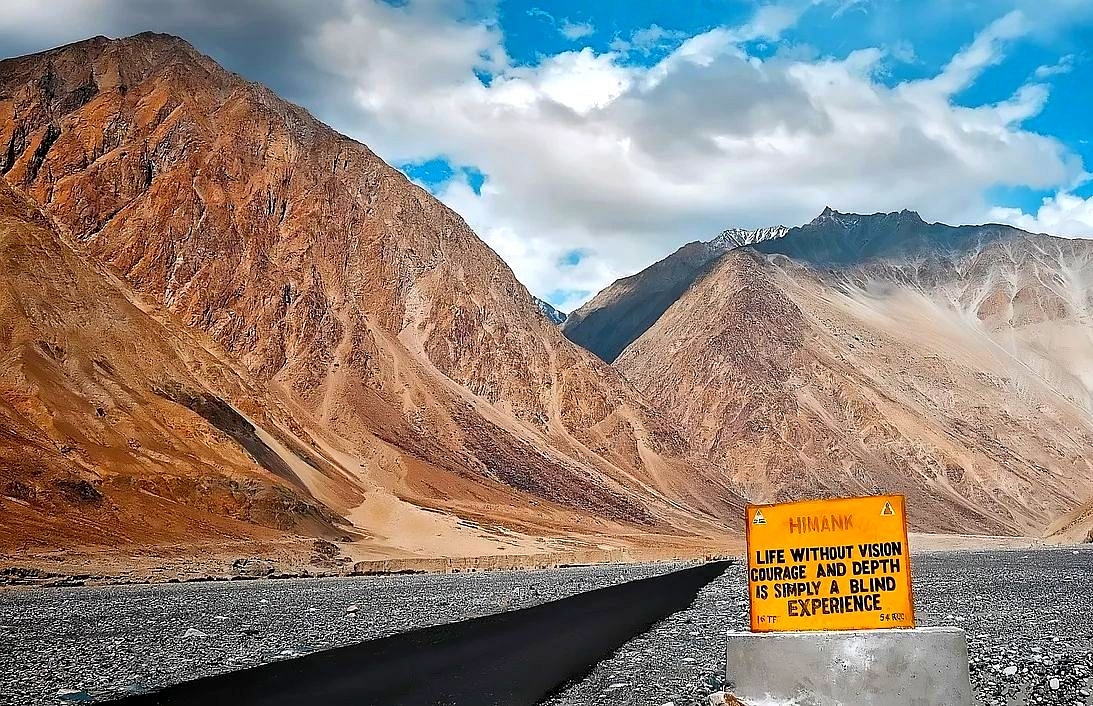Defence
India Building ‘Critical Road’ On China Border In Ladakh, Govt Tells Parliamentary Committee; Asked To Take ‘Final Decision’ On Rail Line To Leh
- The report reveals that around 538.50 kilometres of road have been constructed on the India-China border till November 2020.

Border Road (Representative Image)
India is building a “critical road” on the border with China in Ladakh, the Narendra Modi government has told the Parliamentary Standing Committee on Home Affairs, which presented its report in Rajya Sabha on 15 March.
The committee’s report says the road is being built as a “standalone” project but does not reveal the exact location of the road or the points it connects.
The report, which has also been tabled in Lok Sabha, mentions “construction of a critical road on Indo-China border as a standalone project in Ladakh” as one of the many “ongoing and new projects” on the India-China border.
The report also reveals that around 538.50 kilometres of road have been constructed on the India-China border till November last year.
Among other things, the report says that India is currently working on 25 roads on the China border under Phase I of the India-China Border Roads (ICBR) project, 32 ICBR roads under the second phase of the project, construction/upgradation of 32 helipads, 18 foot tracks in Arunachal, 47 new ITBP Border Out Posts and 12 staging camps.
“...during FY 2020-21, the Indo-China Border Road Phase-II programme has been sanctioned. This programme covers many roads, foot tracks and Border out Posts (BoPs),” the Standing Committee’s report adds.
The Standing Committee has asked the government to improve communication facilities and electrify all villages in Ladakh, including those “located in Zero-Border like Chumar and Demchuk” to stop the migration of people, who act as ‘eyes and ears’ for the security forces, from border areas.
“This will go a long way in fulfilling the developmental needs of these remote, yet, strategically important localities,” the committee says.
“..the border population plays an important role in the overall security...They functions as ‘Eyes and Ears’ of...the security forces. Further, the border population, due to its presence in the farthest most areas of the country, also helps in staking claim to the areas/territories under control and defining the sanctity of the International Boundary,” it adds.
“The Committee notes that out of total 236 habitable villages, 172 villages have telecom infrastructure and only 24 and 78 villages have 3G and 4G internet connectivity, respectively, which is very low,” the report noted.
The committee has also asked the Home Ministry to discuss the construction of a rail line linking Bilaspur in Himachal Pradesh to Leh in Ladakh, with the Ministries of Railways and Defence to take the “final decision” on the project.
“The Committee was informed by MHA that the construction of a railway line between Bilaspur (Himachal Pradesh) and Leh will be strategically beneficial to troops deployed in the area,” the report says, adding, “the Committee recommends that the MHA may take up the matter with Ministries of Railways (MoR) and Defence (MoD) so that final decision is taken on the project.”
The report comes just weeks after India and China announced disengagement of troops at north and south banks of Pangong Lake in Ladakh.
India and China were locked in a tense standoff at these locations for over nine months, and forces continue to remain deployed at other points of friction, including the Depsang Plains, while talks between the two sides continue.
The construction of border roads under the ICBR project has gathered pace over the last few years after making very little headway for over a decade.
In 2020, the Border Roads Organisation, the agency responsible for the construction of roads along India’s borders, improved its performance over the last year despite tensions in eastern Ladakh and a raging pandemic.
According to the Ministry of Defence’s year-end review for 2020, the BRO undertook 1,993 km of formation cutting work and 2,341 km of surfacing work, construction of 2,683 metres of bridges, and executed 2,508 km of resurfacing work and Rs 1,819 crore of permanent work during this period.
The previous year (2019), the BRO had executed 1,123 km of formation cutting work, 2,099 km of surfacing work, construction of 2,557 metres of bridges, and undertook 2,339 km of resurfacing work and Rs 1,601 crore of permanent works between January and November.
Support Swarajya's 50 Ground Reports Project & Sponsor A Story
Every general election Swarajya does a 50 ground reports project.
Aimed only at serious readers and those who appreciate the nuances of political undercurrents, the project provides a sense of India's electoral landscape. As you know, these reports are produced after considerable investment of travel, time and effort on the ground.
This time too we've kicked off the project in style and have covered over 30 constituencies already. If you're someone who appreciates such work and have enjoyed our coverage please consider sponsoring a ground report for just Rs 2999 to Rs 19,999 - it goes a long way in helping us produce more quality reportage.
You can also back this project by becoming a subscriber for as little as Rs 999 - so do click on this links and choose a plan that suits you and back us.
Click below to contribute.
Latest